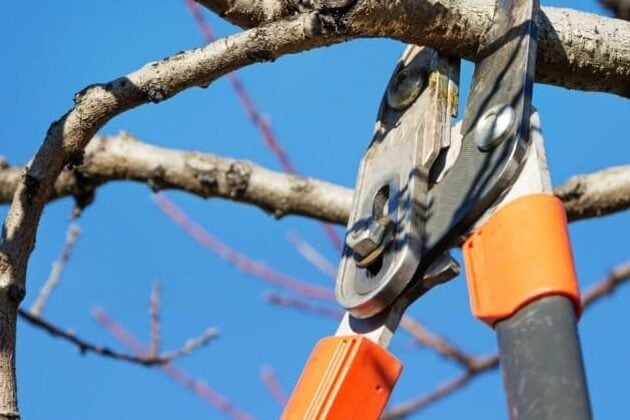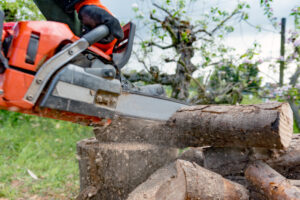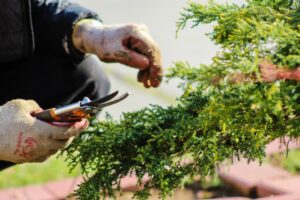Hedge trimming, or knowing how to trim hedges, is an art that takes years to get right, and the management of your own ideal (or wild) hedge is unique to you.
The typical garden hedge in your neighbourhood may have a box or privet shape, but I can almost promise that yours is either more or less ornate, narrower, wider, higher, or shorter than the one in your neighbour's yard.
Our comprehensive guide on how to trim hedges includes information covering everything from when to cut the hedges to the most fundamental aspects, such as which species make the finest hedges for your yard.
A garden without a hedge is little more than a lawn. A hedge acts as a natural fence, providing solitude and shelter from the elements. This will provide you with all the information you require regarding planting, maintenance, and trimming the hedge.
What kind of hedge should I plant in my garden so that it looks nice?
It's not true that all hedges are built the same. You really have to ask yourself what is essential to you and when you want to grow your hedge to decide which one to place in your garden and when you want to plant it.
If you're looking for a hedge that requires less attention and care, select a non-deciduous (evergreen) type such as privet or yew as your choice. When the weather becomes cold, the leaves of deciduous hedges fall off, and these plants require extra maintenance. Cherry laurel and Thuja (Arborvitae) are your best bet for a tall hedge. Hornbeams, like other trees, reach their full height extremely quickly.
Or, if you want a dense hedge at a lower height, a box (Buxus) is the perfect choice for you. Finally, rhododendrons are the appropriate choice for you if you want to add a dash of colour to your garden and you aren't afraid of the additional effort that will be necessary. The first sunshine rays will cause the greens, depending on the kind, to turn into a sea of blossoms that is either white, pink, or lilac in colour.
A Guide on the Maintenance of Hedges
Because there are so many different hedges to pick from, the maintenance requirements for each kind of hedge are specific to the kind, genus, or cultivar they belong to. However, there are a few fundamental things that all hedges require to become established.
However, it would be best if you watered the roots of any hedge plant that you plant during the first few weeks after planting it. After that, you should use one full bucket of water to rinse each plant once a week. This will stimulate the roots to develop deeper into the soil rather than remaining at the soil's surface.
After that, you should water them every two weeks throughout their first summertime, and then you should stop for the winter. Beyond the first year, give your hedges plenty of water when the new growth appears in the spring, but after that, let them space to develop on their own.
In the spring, you can feed some types of deciduous hedges by applying a mulch made of grass clippings or compost; nevertheless, these hedges rarely require any kind of special feeding.
When late winter arrives, prune.
You need to be precise with the timing of the pruning so that the hedges will be in excellent condition by the time the weather starts warming up. It is best to perform any necessary pruning in the late wintertime when the plants are dormant and have not yet produced any buds. When you cut the hedges, try to avoid breaking any buds first because the process of developing new growth will deplete the power of the plants. If you have yet to prune the hedges appropriately, it will also cause them to reach their full height.
Because they grow so slowly, evergreens need to be pruned at the beginning of the season. Simply remove any leaves that have turned a different colour well into the summer season, and stay away from thinning down the foliage unless it is necessary. After the blossoms have died and become brown, the deciduous fast-growing hedge plants should have their branches clipped. Removing spent flowers will encourage the development of new buds that will produce flowers throughout the following year.
How to Cut Back and Shape Hedges
Hedge trimming does not adhere to certain guidelines, but some best practices may be followed to ensure that the hedges you maintain are both beautiful and robust.
Formal Pruning
The goal of formal hedge pruning is to ensure that the hedges always have a clean and orderly appearance. It could involve carefully clipped curves or tightly confined corners, but there's always one consistent element: there are no fly-away stems, which are stems that jut out beyond the main framework of the plant.
To maintain a formal hedge, you must choose the proper plant from the beginning. Box, holly, privet, and hawthorn are all excellent choices for formal hedges because they can be maintained at the same size for many years.
Thinning
When it comes to formal hedge trimming, thinning is necessary since you need to maintain an open and well-aerated centre of the plant to avoid fungal issues and keep branches from brushing against one another.
Simply tracing back the main branches of the hedge and removing them is all required to thin hedges while preserving the dense and full aspect on the outside.
Shearing
To maintain the attractive appearance of formal hedges, periodic shearing is essential. Having well-trimmed hedges can cover up the shortcomings of the rest of the yard. When backed by a neatly clipped formal hedge, even unkempt and overgrown borders can give the impression that they were on purpose.
Shearing can be accomplished with either traditional shears or contemporary electric hedge trimmers. At the very least, once each month, you should trim away anything that expands beyond the original shape and never trims back into the main shape.
Informal Pruning
The process of pruning an informal hedge is quite similar to that of pruning shrubs. In practice, you prune the plant following its requirements, typically to stimulate the production of flowers or fruit.
When the process of flowering or fruiting has ended, just prune the flowering stem by cutting it back by 5 or 6 nodes. To encourage new development in the following year that will result in flowers or fruit cutting slightly above a node, which can be a leaf or bud.
Hedge plants can be trained to grow to their normal size and height when they are pruned in this manner, creating an informal border all the way around your yard. Select juniper, lilac, fuchsia, quince, or forsythia as your plant of choice for the greatest informal hedges.
Topiary
Although it may appear frightening at first, topiary is actually a type of gardening art that is in danger of being lost. Hedge art can be as simple as hedge balls strewn throughout the garden or bridges cut through hedges to give visual interest. While we tend to associate it with stuffy gardens filled to the brim with intricate herbivorous sculptures, it can also be as simple as these things.
Patience is required to develop a decent topiary, but if you routinely prune and top your hedging plants and then let them grow a few inches each year, you may create solid frameworks that can conform to any shape you like.
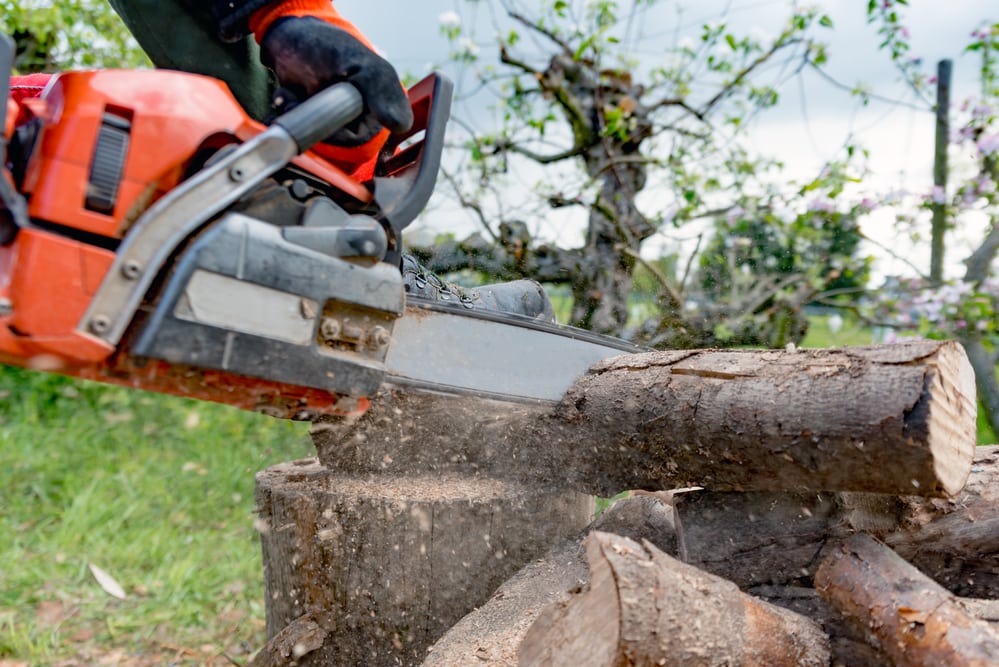
A-Shaped Hedges
Think about the processes that occur in natural settings, no matter what kind of hedge you're trying to cultivate. For example, shrubs are the only plants that can be grown to have a summit that gradually tapers down to a larger base.
This allows light to penetrate every plant surface, encouraging flowering and balanced growth across the entire organism. When pruning formal or informal hedges, avoid creating vertical lines.
Make an A-shaped hedge with a levelled top by gradually narrowing the leaves as you approach the top. You'll end up with more robust hedges that exhibit healthy growth from all directions if you do it this way.
The Three Primary Categories of Hedging Prune Tools
When it comes to trimming and hedging, the most important things to think about are the methods and instruments that will be required to complete the task. After you have studied the different kinds of plants you will be caring for, you can next conduct additional research on how to trim them and what to use to trim them with.
For instance, if you intend to trim hedges, you should study various hedge trimmers, such as gas-powered trimmers, corded electric trimmers, and cordless electric trimmers. Find out which one will quickly and neatly cut the branches, which will conserve the environment the most, which will be the most economical for your money, and which one will be the safest instrument for you to use!
Other tools that you will most certainly require? Obviously, we need some protective gear! When working with greater-height shrubs and hedges, you must invest in safety equipment such as goggles, gloves, and extended-reach tools.
In addition, you need to consider the kinds of methods that are particular to the plants and instruments you have in your supply. For instance, when it comes to hedges, you should always ensure that you are trimming the edges of the plant at an angle so that it is narrower at the peak than it is at the bottom. This can be accomplished by cutting the hedge at an angle. This enables sunlight to reach the hedge's root and lower branch structures, hence increasing the likelihood that it will regrow more robustly and healthily. Also, consider hand-pruning it first before using shears on it. This will assist in promoting new growth and will result in a shrub that is healthier in general.
No matter what kind of trimming you intend to do, you should always make sure that you complete your study in advance so that you are familiar with the kind of method that you will use and the instruments that you will want before you begin.
Electric pruning shears
There are three distinct types of hedge clippers available on the market today: gas-powered, manual, and electric hedge clippers. Each type of pruner is optimised for a certain type of pruning and is available in various sizes. The one that is suitable for a wider variety of pruning tasks should be your first choice.
Gas-Powered Pruners: These are made to cut through thick branches and cover a large stretch of ground at once. These hedge trimmers have a powerful engine that allows them to make short work of cutting hedges. You are free to work wherever on the property, thanks to the fact that it is cordless. However, there is a catch, and that is that the engine may be pretty noisy. Because of this, we ask that you check with your neighbourhood's homeowner's association to determine whether or not the use of this pruner is permitted there. In addition, you need to be familiar with the proper proportions of oil to gas while fueling the pruner.
Electric-Powered Pruners: These are lightweight, strong, and reasonably silent pruners that can simply cut through dense foliage and heavy branches without much effort. Electric pruners are not only simple to operate but also quite inexpensive. Due to the fact that it is corded, the range of the device is restricted; therefore, it is not advised for use when pruning in a big area. If you are going to be working in the garden, you will need to bring an extension cord with you everywhere you go.
Manual Pruners: Manual pruners, such as the pruning shears and telescopic pruners, have a shape that is ergonomically built, and their blades are extremely sharp and sturdy. As a result, you have the ability to cut dense foliage and large branches with relative ease. You won't have to worry about unpleasant odours, loud noises, or tangled cords when you use this device to trim hedges anywhere in your garden or beyond. Because you are performing the activity by hand, finishing it will inevitably take more time. But because of the razor-sharp blades and the precise cutting, you can make rapid progress in space.
Advice for Properly Cutting Down Your Hedges
Trimming a hedge is often more difficult than it initially appears. Cutting back your hedge is not the only thing that needs to be done; you also need to do it in a way that will encourage the hedge to develop in the future. And you don't want to cause the hedge harm.
Cut back on the quantity, but carry out the activity more frequently.
If you have a hedge that grows quickly, you should aim to trim away a smaller portion of it each time, but you should trim it more frequently. In general, you should avoid trimming a hedge back too much because doing so can cause it to become unhealthy. Make it a goal not to cut back more than 30 per cent of the total size of a hedge all at once.
Always ensure that your tools are sharp.
When gardening, sharper instruments are better. When you break branches of the hedge carelessly, you risk exposing it to illness or other problems.
Spread out a Tarp on the Floor.
To make your job of cleaning up after trimming the hedge easier, start by placing some sheeting below it. You can also quickly rake the area beneath the hedge, but in either case, you need to make sure that it is cleaned up after you are through to prevent any fungus from forming there.
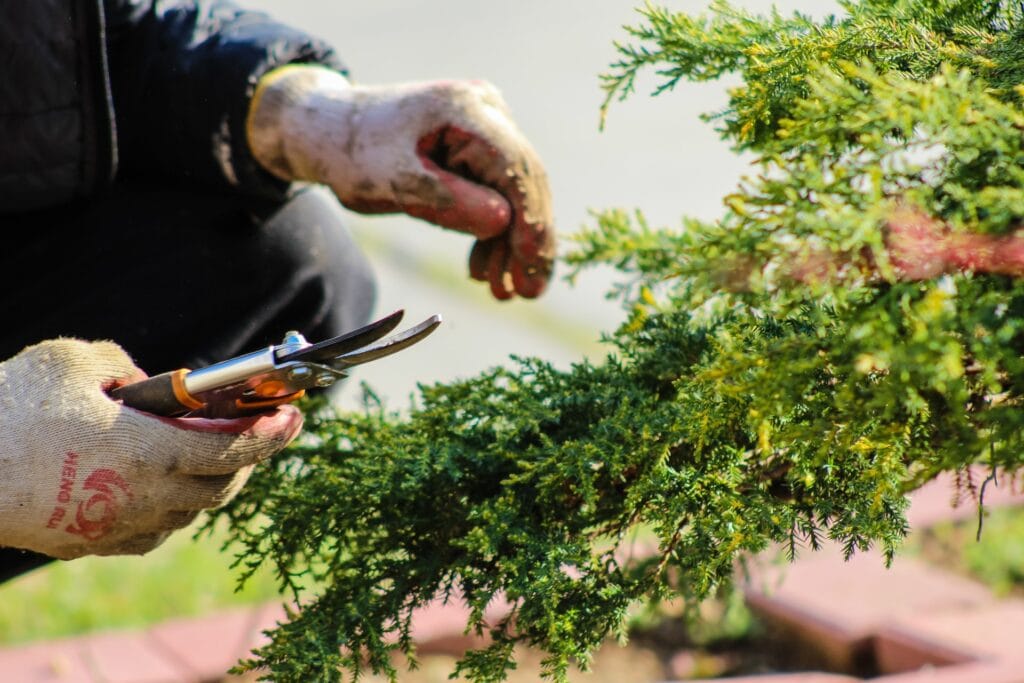
Think about the kind of cutting, edging, or trimming you want to do before you start.
If you break it down into its component parts, pruning your hedges, bushes, and shrubs doesn't have to be as difficult as you would think. In fact, it's quite simple. However, this does not imply that you can simply take a pair of shears to any plant and expect it to grow back as you like. On the contrary, each variety of plant that you intend to hedge, prune, trim, or cut requires you to consider a unique set of considerations carefully.
Our most important piece of guidance is that you should look at the kind of fauna or flora you intend to trim up and then do some research on the topic. Make sure that you are trimming the plant at the appropriate time, that you have the appropriate tools, and that you are up to speed on the procedures that are specific to the method for the plant. If you plan to do an entire revamp of the plant, make sure that you trim the plant at the appropriate time. To put it another way, although it is possible for you to handle these kinds of operations on your own, you should always check to ensure that you are doing so correctly.
Mistakes That Are Often Made When Trimming Hedges
When trimming hedges, there are a few fundamental errors that we may all be guilty of making, but just like most plants, they will rebound. The following is a list of the most typical trimming errors that people make, which we have compiled in the hopes that you may be able to avoid them the following year:
- When certain types of hedging plants have dead wood, cutting through it will impede new development. When cutting, you should aim for new growth or wood that has buds below the cut site so the plant can regrow.
- If you prune the plant before it blooms, it won't produce flowers at all this year. So always attempt to prune hedges after they have flowered or after they have produced fruit.
- Allowing topiaries to reach their full height too rapidly by themselves. Creating a topiary takes some time, and throughout that period, it is essential to perform regular pruning rather than letting everything grow vertically all at once. This can result in hollow areas being formed below any shapes that you may eventually build.
- The spread of illness is facilitated by using filthy tools. To prevent the unintentional spread of illness, it is vital to sanitise your shears or pruning equipment every few metres when pruning boxwood.
Summary
Your hedge can represent anything to everyone. Therefore, your hedge can be either. You have complete control over the matter, but before picking a pair of secateurs, you must thoroughly understand your hedging plants.
I really hope that this tutorial on how to trim hedges answers all of your questions, but if it doesn't, you can always check out some of our other blogs about hedging plants, which are linked up above, to learn more about how to care for various kinds of hedging. If you are not sure that you can trim the hedges yourself, contact us, and we will be happy to help you
Frequently Asked Questions
When should you begin to trim hedges that have recently been planted?
Formative pruning refers to the process of cutting young hedges, which differs from traditional hedge trimming done on existing hedges. When performing formative pruning in the winter or early spring, you should cut back one-third of the new growth.
It would help if you continued doing this until the hedge reaches the height you want it to be to ensure that there is a dense growth mesh at every level.
If you have a hedge, should you prune it during the winter or the spring?
If you want to prune back an overgrown hedge, you should wait until early spring to do so. This is the time of year when new growth is ready to begin, and you can see buds starting to appear along the branches.
When you prune in the winter, you leave open wounds that will take significantly longer to recover than when you prune in the spring.
What percentage of a hedge can be removed with a single cutting?
You can trim the hedge down to the ground or leave it a few inches tall, depending on the variety of hedges you have. If you are doubtful, look for signs of buds or nodes that are still alive along the older stems.
These are the areas on the plant where new growth will occur. Because the ground beneath the leaves of some coniferous hedges does not support new growth, the hedges should only have their tops lightly clipped.
Who is responsible for maintaining the hedge that is located all around the property?
Both of your neighbours are responsible for maintaining any boundary hedges that may exist. They are responsible for trimming your hedge if it becomes unmanageable on their side of the yard. You are responsible for trimming theirs if it becomes overgrown on your side of the fence.
Due to the fact that your neighbour may have a different assortment of plants than you have, it is in your best interest to take care of your entire hedge yourself.
Can I trim hedges in extreme weather conditions?
It's generally not recommended to trim hedges in extreme weather conditions. High temperatures, strong winds, or freezing temperatures can stress the plant and hinder its ability to recover from pruning. Optimal trimming conditions are mild and moderate weather with temperatures between 50°F to 75°F (10°C to 24°C) for most hedge species. If extreme weather is imminent, it's best to delay the trimming until more favourable conditions prevail.

